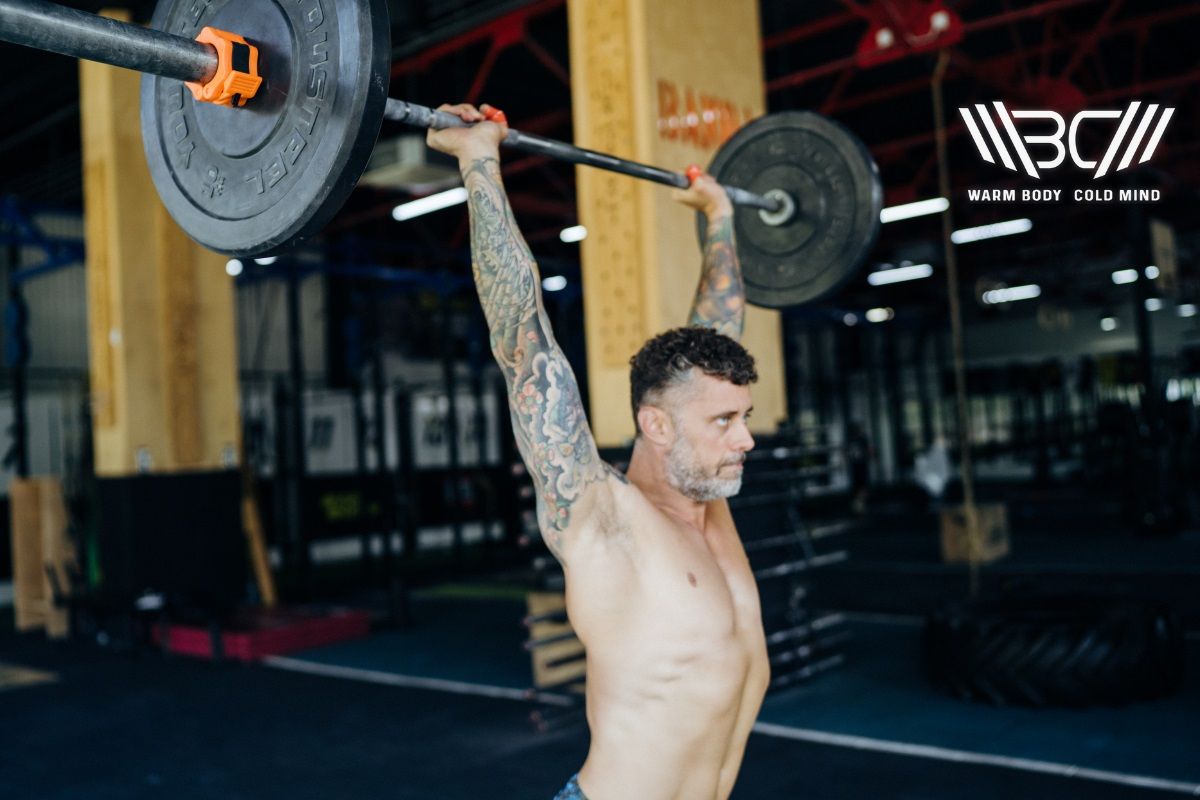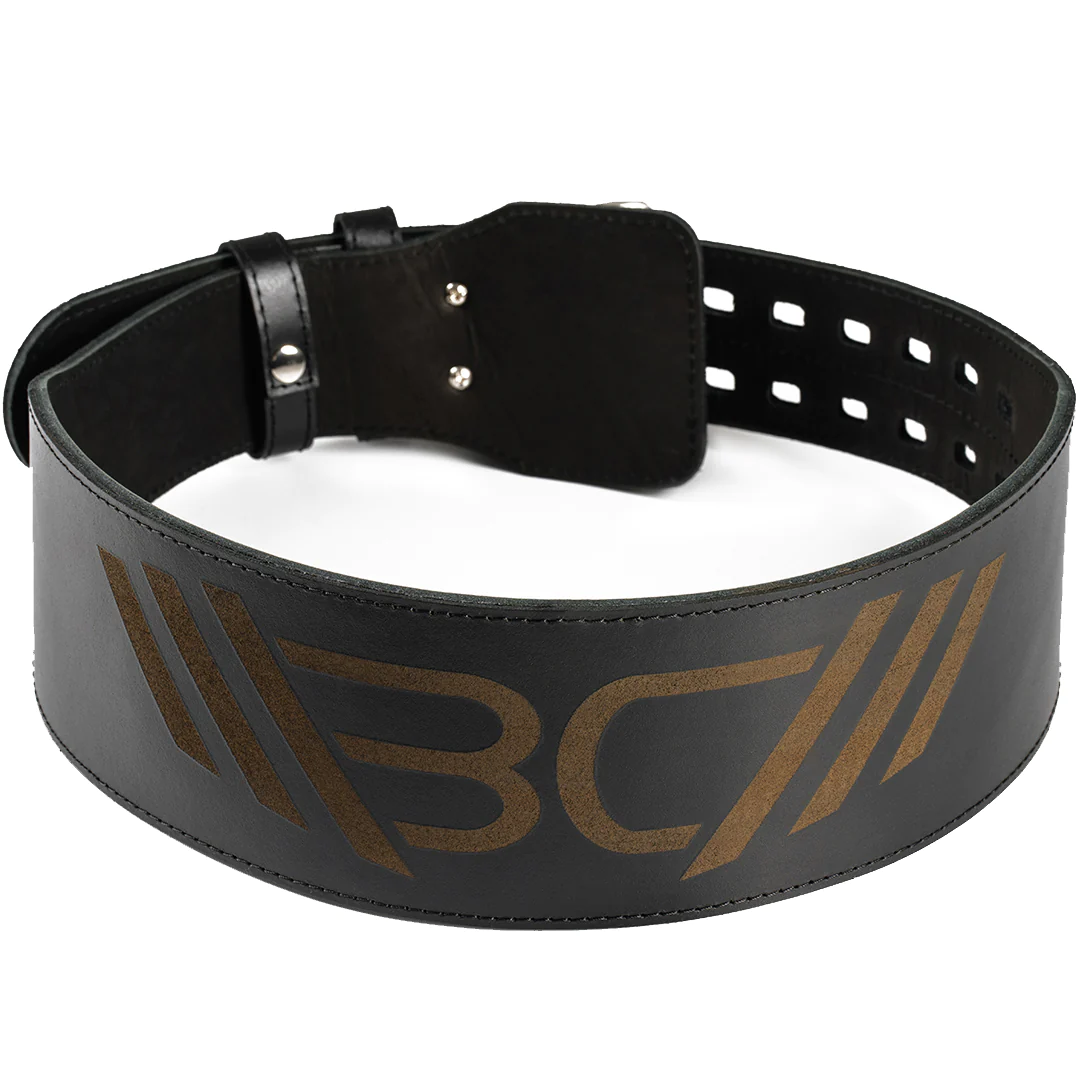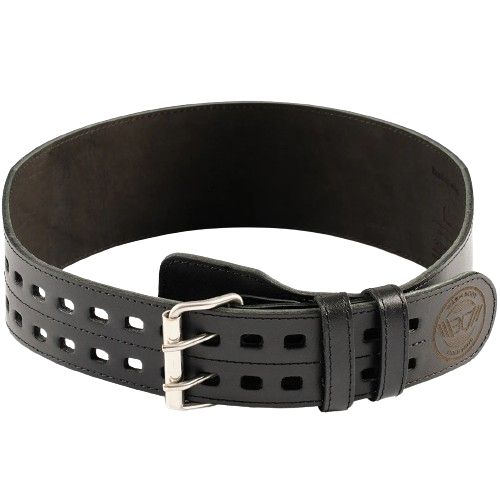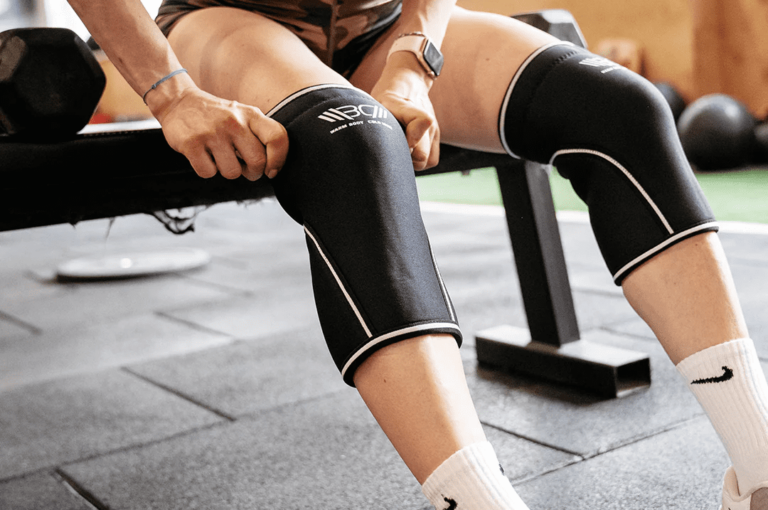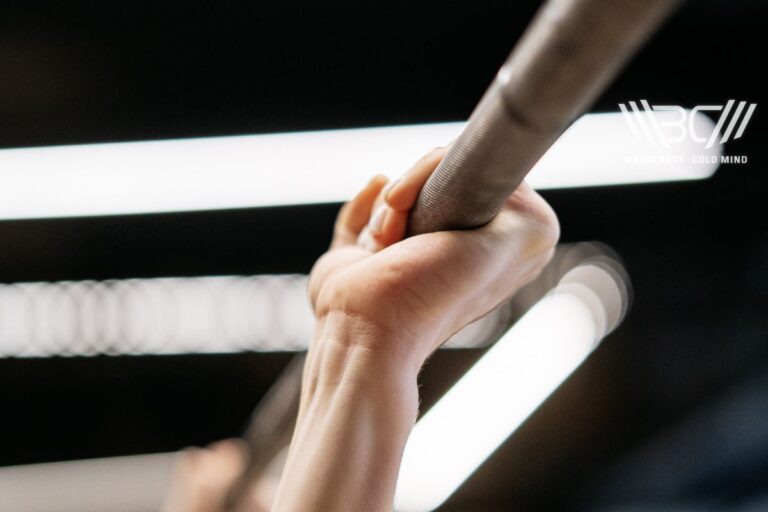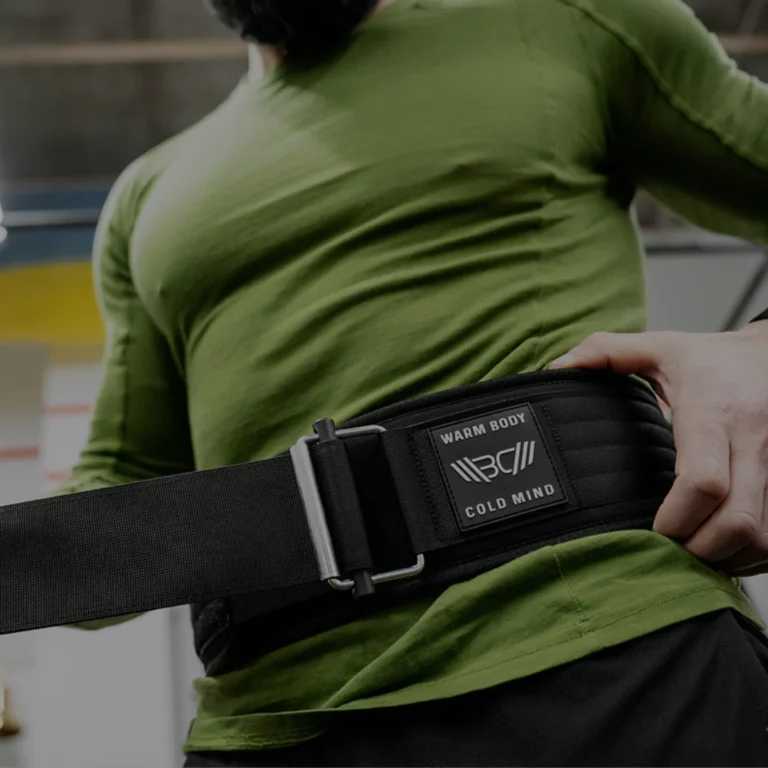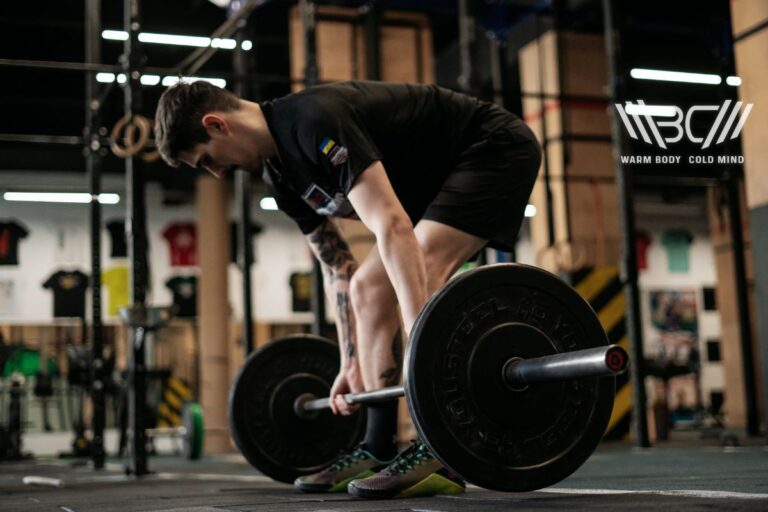Barbell vs Dumbbell Shoulder Press – The Ultimate Comparison
We all want strong, sculpted shoulders, and there are tons of exercises that can make that happen. The debate between the barbell vs dumbbell shoulder press is one of the most common ones because these are some of the best exercises you can do to build upper body strength and develop your shoulder muscles, but which is better?
Which one should you focus on more? Sure, you can do both, but are you wasting your time with one of them?
The short answer – neither is better. Yes, they both target similar muscle groups, but their approaches are different because one promotes overall upper body strength, while the other allows for a greater range of motion and it can address potential muscle imbalances.
Which is which? We’ll get right into it!
What is the difference between barbell vs dumbbell shoulder press? – With the barbell shoulder press, you lift the load overhead working the strength of your upper body. The dumbbell shoulder press, on the other hand, uses individual weights allowing for a greater range of motion and addressing potential muscle imbalances.
Barbell vs Dumbbell Shoulder Press: Mechanics & Benefits
So, which one will work better for you, barbell or dumbbell shoulder press? Well, nobody can answer that question but you because it depends on what you’re after and generally, it would be best to do both. But first, let’s get more familiar with the differences so you know exactly why you shouldn’t choose and why both need to have their place in your routine.
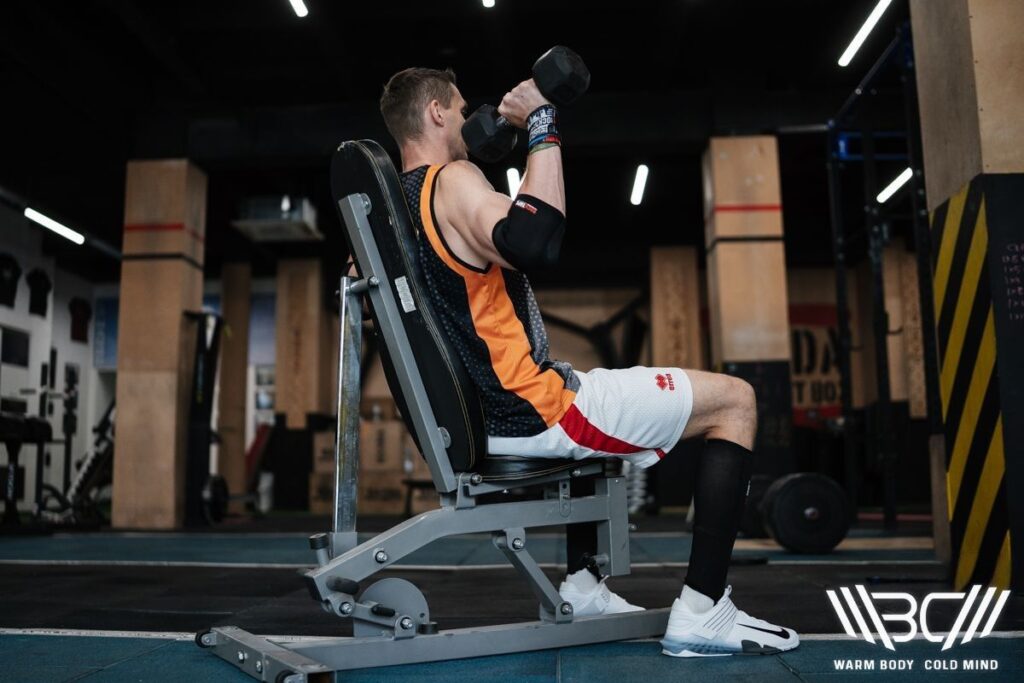
If you’re doing the barbell shoulder press, then you’re lifting a loaded barbell over your head with both arms extended. Both of your arms work together in synchronous movement to lift the barbell, which requires a good deal of stability, and it engages a whole range of muscle groups, like the deltoids, triceps, and upper chest. This compound exercise is an absolute staple when it comes to strength training.
In contrast, if you’re doing the dumbbell shoulder press, you’re lifting separate weights in each hand, which gives you a lot of freedom of movement. This means you also get a broader range of motion and allow each arm to work autonomously. This engages your stabilizer muscles more dynamically and it can also address any potential muscle imbalances.
Let’s get into more detail when it comes to the differences between dumbbell overhead press vs barbell.

Enhance your strength training with Warm Body Cold Mind leather weightlifting belt providing exceptional support and durability.
1. Range of Motion
The winner in this category is the dumbbell press because you lift separate weights, each with one hand, and your arms can move freely. With the barbell press, arm movement is restricted. This broader range of motion means you can stretch your muscles more during your workout and make them work harder.
2. Stability and Balance
You need more balance to do the barbell shoulder press because both of your arms are working together to lift a steady weight, and this engages your core for control. The dumbbell press uses separate weights so the focus is more on the stabilizer muscles – they’re the ones working hard to balance each arm independently.
3. Muscle Activation
Both exercises target the deltoids, triceps, and upper chest, but their mechanics influence muscle activation in different ways. The barbell shoulder press needs a fixed grip, so the emphasis is more on your overall strength, while the dumbbell shoulder press contributes to a more balanced muscle development because it activates muscles on each side intensely.
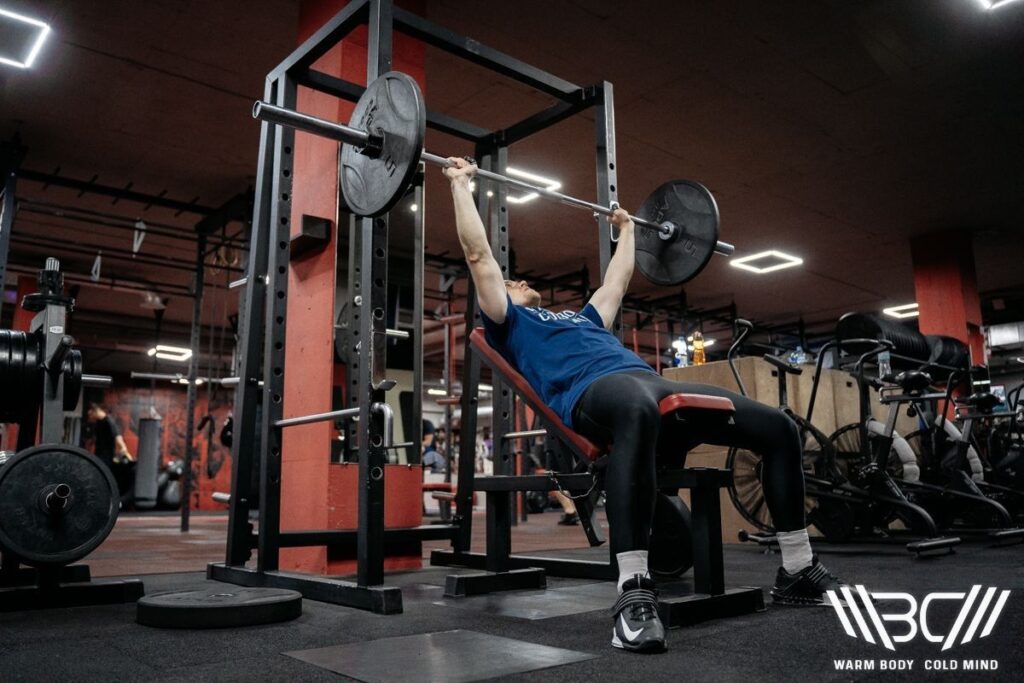
4. Progression
In most cases, the barbell shoulder press will allow you to lift heavier weights and a more straightforward progression in weight increments. Dumbbell presses are more about flexibility in adjusting the weights independently and they cater to various strength levels and addressing imbalances between sides.
Dumbbell Shoulder Press vs Barbell Shoulder Press: Why You Need Both?
The reason as to why we’re comparing dumbbell shoulder press vs barbell is because it’s important to understand that there’s no making a choice between them – you need both. They’re similar but different at the same time and a lot of people think one is better than the other, but the truth is, a balanced routine needs both of them.
They both do a really good job at strengthening your shoulders and developing your muscles, but they do so in different ways. The dumbbell shoulder press gives you freedom of movement because you can move each arm independently, and that engages your stabilizer muscles, and it can also help with muscle imbalances.
The barbell shoulder press keeps your hands in a fixed position and works more on your overall upper body strength and power because its movement is so structured and needs your arms to be coordinated. Also, 1RM is generally higher for barbell shoulder presses.
It’s hard to really know the difference when you put them side by side because there doesn’t seem to be too much of a difference between them, which is why you will find people who prefer one over the other and then just focus on that. But that’s not the right way to go about building your upper body strength and develop your muscles evenly.
Dumbbell Shoulder Press
This is one of those foundational exercises that you’ll see almost everyone do because it’s relatively simple and it’s one of the most effective exercises to build strength in your upper body.
Its main focus is your deltoid muscles, which form the rounded contour of the shoulders. It also engages the trapezius muscles in your upper back and the triceps at the back of the arms. It can even engage your chest muscles to a certain extent. During the dumbbell shoulder press, the stabilizing muscles work in harmony to support and balance the movement.
This exercise is vital for building upper body strength, but its importance translates to some sports, too. Think of basketball, volleyball, or tennis – there’s a lot of overhead motion and strong shoulders are crucial for power and control. Dumbbell shoulder press helps build the strength and stability so athletes can withstand those repetitive overhead motions.
It doesn’t stop with basketball, volleyball, and tennis, of course. Take contact sports like football, rugby, and martial arts. Strong shoulders are super important for tackling and pushing opponents.
Apart from the benefits that are related to sports, the dumbbell shoulder press will promote shoulder strength in general, as well as muscle growth. It can also help in correcting poor posture. Stabilizing muscles, which do a lot of work during this exercise, are key for developing balance and coordination, which can not only help prevent issues related to shoulders, but it can also make your everyday activities easier.
How to Correctly Perform a Dumbbell Shoulder Press?
As it is with everything else in fitness, you need to do the exercise right or you won’t get the results you’re after, and you might even end up hurting yourself.
Let’s see what’s the correct way to do the dumbbell shoulder press.
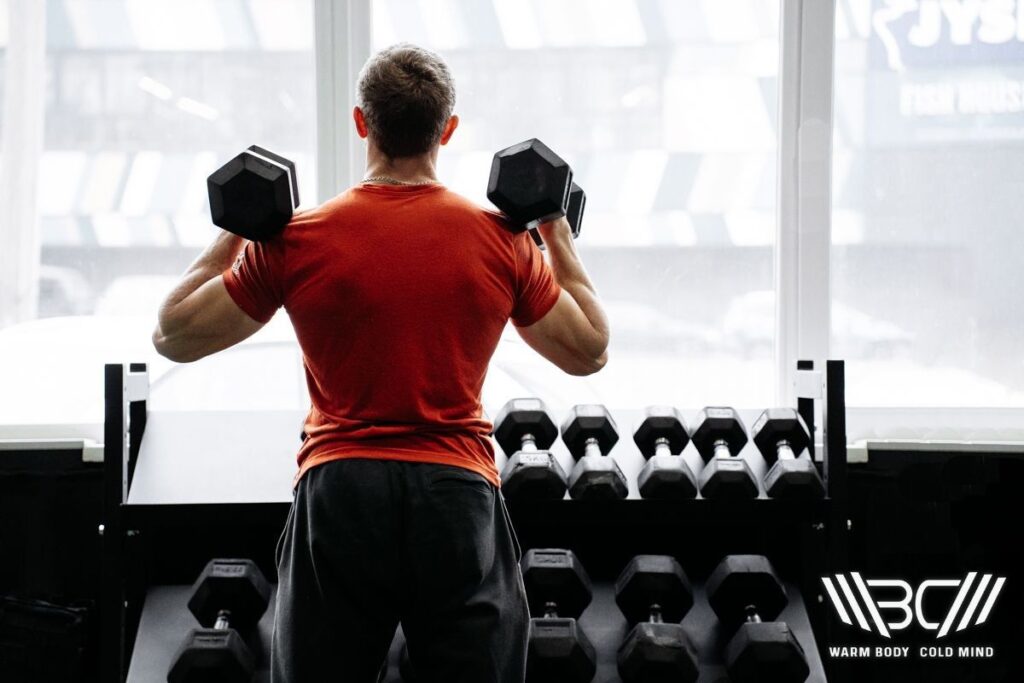
1. How to Start
After you’ve warmed up, it’s time to start working out. You can sit down, or you can stand; whatever you do, make sure you have a stable base.
If you’re sitting down, sit on a bench with back support or, if you’re standing, stand with feet shoulder-width apart. Hold the dumbbells and keep them at shoulder height. Your palms need to be facing forward and your back needs to be straight. Engage your core muscles for stability.
2. Elbow and Wrist Alignment
Your elbows should be slightly forward and forming a 90° angle with your upper arms. Check that your wrists are aligned with your elbows because if they’re not, it will put a lot of strain on your joints.
3. Pressing Motion
As you exhale, press the dumbbells up. Extend your arms, but don’t fully lock your elbows at the top of the movement. This exercise needs to be controlled and deliberate so it can engage the shoulder muscles effectively.
4. Range of Motion
Lower the dumbbells (in a controlled way) until your elbows reach shoulder level or a tiny bit below. Don’t lower them abruptly or too deep because it can compromise the stability of your shoulders and you can strain your muscles.

5. Breathing
Your breathing needs to be coordinated with the movement that you’re doing. This means that you should inhale as you lower the weights and exhale as you press them up. Breathing the right way will help you keep stability and energy. Don’t ever hold your breath because it can be harmful, especially during weightlifting.
6. Momentum
Momentum doesn’t do anything when you’re lifting weights, which is why you need to focus on the muscles you’re trying to target and make sure they’re the ones bearing the brunt of the effort. You may be tempted to rely on swinging motions because they will make the exercise easier, but you’ll just waste your time that way.
7. Posture
Keep your spine neutral and don’t lean forward or backward too much. A stable posture will ensure your muscles are engaged and it will also reduce the risk of straining your lower back.
8. Cool Down and Stretch
When you’re done with your workout, cool down with shoulder stretches. It’s very important to cool down after each workout, so don’t skip it.
Pros and Cons of Press Dumbbells with the Shoulder
The biggest pro is, of course, the fact that the dumbbell shoulder press engages stabilizer muscles because each arm moves independently, and it can also help with any muscle imbalances and potential differences in strength between the two sides. Compared to other shoulder exercises, this one allows for a greater range of motion, which can lead to better muscle activation and potentially better muscle development.
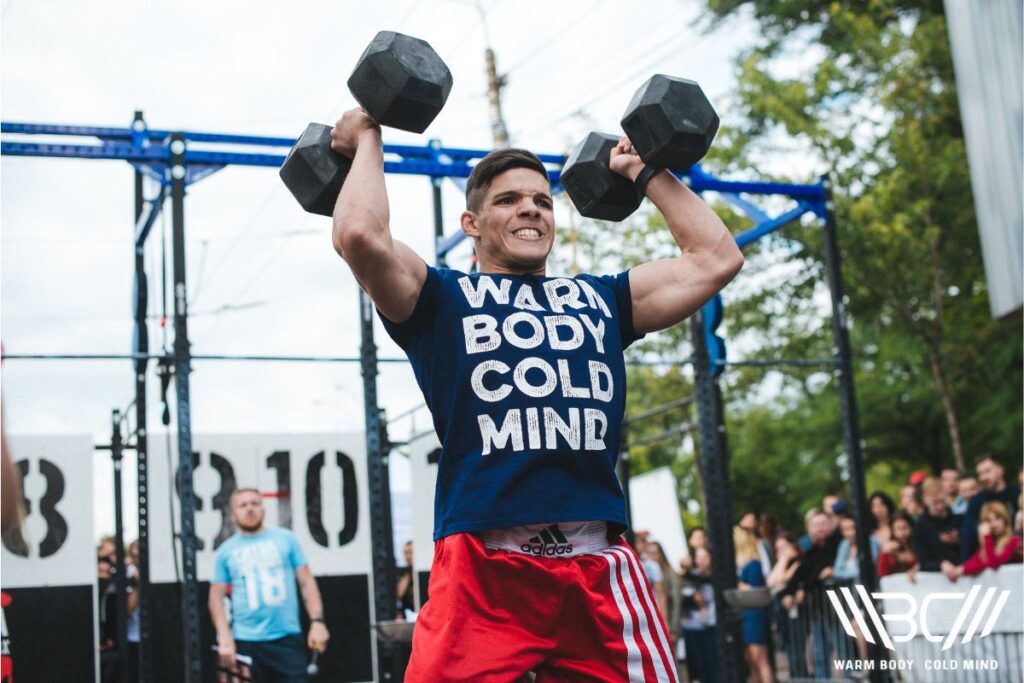
However, it’s not without its drawbacks; when you compare it to the barbell shoulder press, the dumbbell shoulder press won’t allow you to lift as much weight. This is because stabilizer muscles need to work harder to balance each dumbbell independently.

Pro Tip:
If you’re a beginner, your priority should be form, not heavy weights.
Start with weights you can manage and perfect your technique before you increase the weight you’re lifting. Make sure your movements are controlled and you’re engaging your muscles. Once you’ve learnt all of this, you can continue to heavier weights, and you can keep increasing the weight as you build your strength.
Shoulder Barbell Press
Another foundational exercise and another amazing way to develop your shoulder muscles. The barbell shoulder press is a compound movement that engages various muscles in your upper body, but its primary focus is the deltoid muscles. It also engages the trapezius, triceps, and upper chest muscles to help with lifting the barbell over your head.
It has its place in athletes’ fitness routines, too, and you’ll find a lot of similarities with the dumbbell shoulder press here. This is another exercise that can benefit everyone who plays basketball, volleyball, tennis, etc. Basically, all sports with frequent overhead movements. You need strong shoulders to be able to do them repetitively, and that’s exactly what you’ll get from the barbell shoulder press.
Football and rugby players will also often do barbell shoulder presses because shoulder strength plays a big role in blocking, tackling, and being able to remain stable during collisions.
How to Correctly Perform a Barbell Shoulder Press?
If you do it properly, not only will you get the best results possible, but the chances of straining or injuring yourself will be significantly lower.
Here’s how to properly do a barbell shoulder press:
1. Starting
Warming up before a workout is crucial, so take a few minutes to warm up your muscles. Once you’ve done that, stand with your feet shoulder-width apart and bend your knees a little. Grip the barbell slightly wider than shoulder-width apart and rest it in front of your shoulders. Keep your chest up and make sure your core is engaged – this is important for stability.

Pro Tip:
You can introduce some variety into your routine and do barbell presses in a seated position.
2. Aligning Your Wrists and Elbows
Your elbows should be slightly in front of your body to prevent straining your muscles too much, and your wrists need to be aligned with your elbows. The grip on the barbell should be neutral and comfortable.
3. Pressing Motion
Exhale as you push the barbell over your head in a controlled manner and extend your arms without locking your elbows at the top. Focus on a smooth, vertical path of movement because this will effectively engage the muscles you want to target.
4. Range of Motion
Lower the barbell (again, in a controlled manner) until your elbows are at shoulder level or a little bit below that. Do not arch your back too much and don’t lean forward a lot because you’ll compromise both your form and stability.

5. Breathing
Your breathing and the movement need to go hand in hand so inhale as you lower the barbell and exhale as you press it up.
6. Avoid Momentum
Barbell shoulder presses are challenging so you may want to give yourself a break and rely on momentum for a bit to make lifting easier. You really shouldn’t do that, though. Momentum does nothing for you except waste your time and energy. All of your movements need to be controlled, otherwise the exercise will produce no results.
7. Cool Down
Take a few minutes to stretch and cool down and you’re done!
Subscribe!
The latest reviews of must-have home gym training equipment, apparel, and supplements that will enhance your performance and bring you new results.
Pros and Cons of Barbell Shoulder Press
The best thing about the barbell shoulder press is that it engages multiple muscles in your upper body at the same time. It’s an ideal addition to your strength training routine, so it’s no wonder this is one of the most popular exercises around. It promotes the overall strength in your upper body and it also helps with stability.
Keep in mind, though, it relies on a fixed grip, and that can result in strain or discomfort, especially if shoulder mobility is restricted.
Weightlifting Belt We Recommend for Barbell and Dumbbell Shoulder Press
WBCM Leather Weightlifting Belt
If you’re lifting, then you probably want a weightlifting belt, and the one we recommend is our Warm Body Cold Mind Leather Weightlifting Belt.
Our 4’’ belt has a double roller steel buckle that’s fortified with 4 strengthened bolts. It’s made of genuine, grade-A leather. It’s 6 mm thick, which means it is super durable and supportive.

As per its design, the WBCM leather belt’s width will provide you with just enough support, and it is suitable for both men and women. We made sure the belt comes in 5 sizes (S, M, L, XL, XXL, XXXL), so that it fits all body shapes.
Just make sure you use our recommended guidelines when taking your measurements from the true waist size (not the pants size) before ordering.
Pros
- Made from grade-A leather
- Stays in place thanks to the buckle fortified with 4 strengthening bolts
- Easy to break in
Cons
- Only 1 color available
FAQ
How Much Can the Average Man Shoulder Press?
The average man can usually shoulder press about 65-85% of their body weight for a single repetition, but keep in mind that this varies based on things like training experience, body weight, and overall strength. Someone untrained can start with 65% of their body weight.
Is DB Press Better Than Barbell Press?
Is dumbbell shoulder press better than barbell really depends on your goals and preferences. Dumbbell presses will give you more range of motion and balance, while barbell presses focus on improving your overall strength because it involves heavier weights.
Is the Barbell Shoulder Press Suitable for Beginners?
With proper guidance and lighter weights, yes, the barbell shoulder press can be suitable for beginners. It will help build strength in the upper body, but barbell press relies on good form, so make sure to get that down first, before you go on to heavy weights.
Is Barbell Overhead Press Harder Than Dumbbell?
Usually, it’s a bit more challenging than the dumbbell press because it uses heavier weights, and its pattern of movement is fixed. The barbell press needs more stability and engages more muscles for coordination compared to the dumbbell press.
Conclusion
And that’s all there is to it! You should now know exactly what each of these exercises does and why you need both for a balanced strength training routine. If you’re a beginner, remember to work at your own pace and don’t get too hung up on barbell or dumbbell shoulder press standards – use them as a guide, not to put pressure on yourself.
And if you love weightlifting, then you’ll also love the WBCM Leather Weightlifting Belt – it’s the perfect complement to your routine!
With all of this being said, what do you have to add? Do you prefer one over the other? Do you have any tips to share for beginners?
Leave your comments and tips!
Happy lifting!
References:
- Atle H. Saeterbakken, Marius S. Fimland, “Effects of Body Position and Loading Modality on Muscle Activity and Strength in Shoulder Presses,” Journal of Strength and Conditioning Research 27, no. 7 (2013): 1824-1831.
- Courtney J. McGowan, David B. Pyne, Kevin G. Thompson, Ben Rattray, “Warm-Up Strategies for Sport and Exercise: Mechanisms and Applications,” Sports Medicine 45, no. 11 (2015): 1523-1546.
- Katie McCallum, “Why Proper Breathing During Exercise Is Important & How to Avoid Common Mistakes,” Houston Methodist Leading Medicine, https://www.houstonmethodist.org/blog/articles/2023/may/why-proper-breathing-during-exercise-is-important-how-to-avoid-common-mistakes/ (accessed December 28th, 2023)
- Ruby Khanna, “6 Dumbbell Shoulder Press Variation Exercises to Build Upper Body Strength,” Sportskeeda, https://www.sportskeeda.com/health-and-fitness/6-dumbbell-shoulder-press-variation-exercises-build-upper-body-strength (accessed December 28th, 2023)
- Stacey Carter, “Why it’s important to cool down after exercise, according to the science,” LiveScience, https://www.livescience.com/why-its-important-to-cool-down-after-exercise-according-to-the-science (accessed December 28th, 2023)
Author: Sergii Putsov
PhD in Sport Science, Olympic weightlifting, Strength & Conditioning coach and fitness expert
Sergii Putsov is a professional weightlifter with over 20 years of experience and multiple national medals. He was a member of the National weightlifting team, competing in the 94 kg weight class. Sergii holds a master’s degree in Olympic & Professional Sport Training and a Ph.D. in Sport Science. After his athletic career, Sergii transitioned into coaching and is now responsible for designing training programs, writing blog articles, providing live commentary for international weightlifting competitions, and hosting sport and fitness seminars worldwide.

